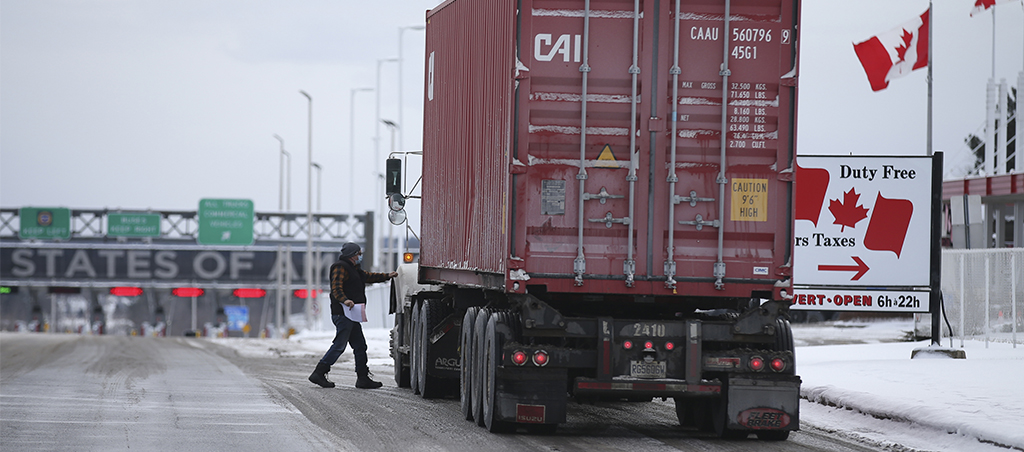
The Future of Supply Chain – Resource Sharing
The evolution of freight down the ages
Trucking keeps the civilization on the move. Trucks are the mechanized beasts of burden moving loads, making essentials reach their destination in time and keeping trade and commerce flow seamlessly. We wonder what necessity drove to invention of the wheel, the quintessential contrivance, on which the freight and logistics industry operates. It remains a wonder how man conceived the idea of the wheel? Let us discuss how freight movement evolved over time. And, importantly, what are its current and critical operational issues. Let us discuss these topics and evolution of freight industry. The first great ingenuity in the history of movement of loads was the use of tree trunks for wheel-like-motion in the primitive age. This technology later found its first grand usage in the Nile Valley Civilization around 2700 BC, when Egyptians constructed the pyramids.
Huge stone blocks were moved close to the construction sites, were chiseled, and then hauled up, one upon the other. Another milestone in transportation was the usage of sea-vessels by the people of Indus Valley Civilization. The use of sea-vessels for transport reached its zenith amongst the Greeks a couple of hundred years before the advent of Jesus. The Greeks were the first to venture into inter-continental trade carrying commodities from Europe to northern Africa across the Mediterranean. After the Islamic conquest of Spain, the columns of awe-inspiring Mezquita Mosque were transported from other parts of the Muslim Empire here.
Fast forward to the medieval world and mankind became more peripatetic. Shipping grew manifold and Europeans connected various parts of the world through sea-routes and maritime trade grew. There was an extensive transportation on the land using horse or bullock drawn carriages. The nineteenth century saw the pervasive use of steam-fired road and rail conveyances. Then happened the invention of the internal combustion engine, which revolutionized road travel and transportation forever.
Scientific movement of cargoes and military equipment during the Second World War became the techniques of logistics and operations research for the business world immediately after the war. Invention of shipping container in 1956 revolutionized the freight movement giving a big boom to global business. Japanese value added to movement of industrial goods and inventory replenishment through Kanban and Just-in-time concepts. Later Japanese car manufacturers also started using QR and ECR technologies with an emphasis on distribution of products and materials.
The scenario and technologies today
In today’s fast moving world, global interdependence, Internet and mobile telephony, logistics has come to have a very wide scope. As stated earlier, we have to manage the flow of goods from their point of origin to customers and corporations. Somehow or the other, racing against time is of essence here always. And not being able to make it involves penalties and loss of customer’s trust. As supply chain management professionals, the ambit of our solutions broadens and we have to coordinate and collaborate with channel partners, suppliers, intermediaries, third party service providers and customers.
For smooth and consistent flow of goods our efforts are always focused on 5Rs – “right products at the right place at the right cost and in right conditions and right quantity”. While ensuring the operational excellence by 5Rs puts a lot of pressure on us. Our foremost challenge is to optimize fuel costs. Any escalation here results in increase of freight rates. We have to continuously add technologies in our processes to keep ourselves competitive. Transport solutions have to be based on software and technologies like Artificial Intelligence (AI), Big Data, Internet of Things and Blockchain and Distributed Ledger Technologies (DLTs). These technologies also make the processes more flexible.

Looking forward
Logistics and transportation is set for a bright future if we can decrease the inconsistencies in last mile deliveries and create more robust collaborative horizontal partnerships whether in form of alliances, joint ventures or M&A. This is hampered by high-level of fragmentation amongst the industry players and companies are skeptical of collaboration fearing their brand dilution by outsourcing the last mile to operator that doesn’t live up to its value proposition.
The Physical Internet (PI) holds the answer. It can standardize collaboration protocols and smart interfaces for more efficiency and sustainability. Yet, some industry are wary of conjectures. They believe that it is hard to guess how industry will look like in five to ten years in future.
Some challenges
There are some other matters of extreme concern to the industry. Compliance of the regulatory environment for safety cannot be ignored at any cost. Hiring and retention of good drivers remains yet another core challenge area. The global emission norms and their implementation at the federal or provincial levels increase the cost of fleet management. Customers want transparency so that they get real time information on whereabouts of their goods. Transport and logistics management companies have also to remain aware of latest developments in free trade agreements. Outsourcing of some of the business processes can reduce expenses and bring efficiency in the supply chain and help achieve regulatory compliance. It also gives the company access to better professionals and help bridge the impact of talent gap.
Likewise offshoring of LTL and Parcel billing too can be a cost cutting measure. Fully or semi-automated processes can eliminate or decrease human intervention offering integration across the value chain. But technological solutions need investment and thoughtful implementation. The long term gains of this are many. On the whole, the market forecast for the things to come is positive provided transport and logistics service providers can work on different value-chain integrations between manufacturers and e-tailors and pass on the benefits to customers, while remaining sustainable.

Drive Smart with a Driver’s App
Our app matches carriers with shippers. Carriers can just tap a button and instantly book a load, and the price you see is the price you get – no more back-and-forth negotiations. Loads on our app are exclusive to us through our contracts with shippers.



